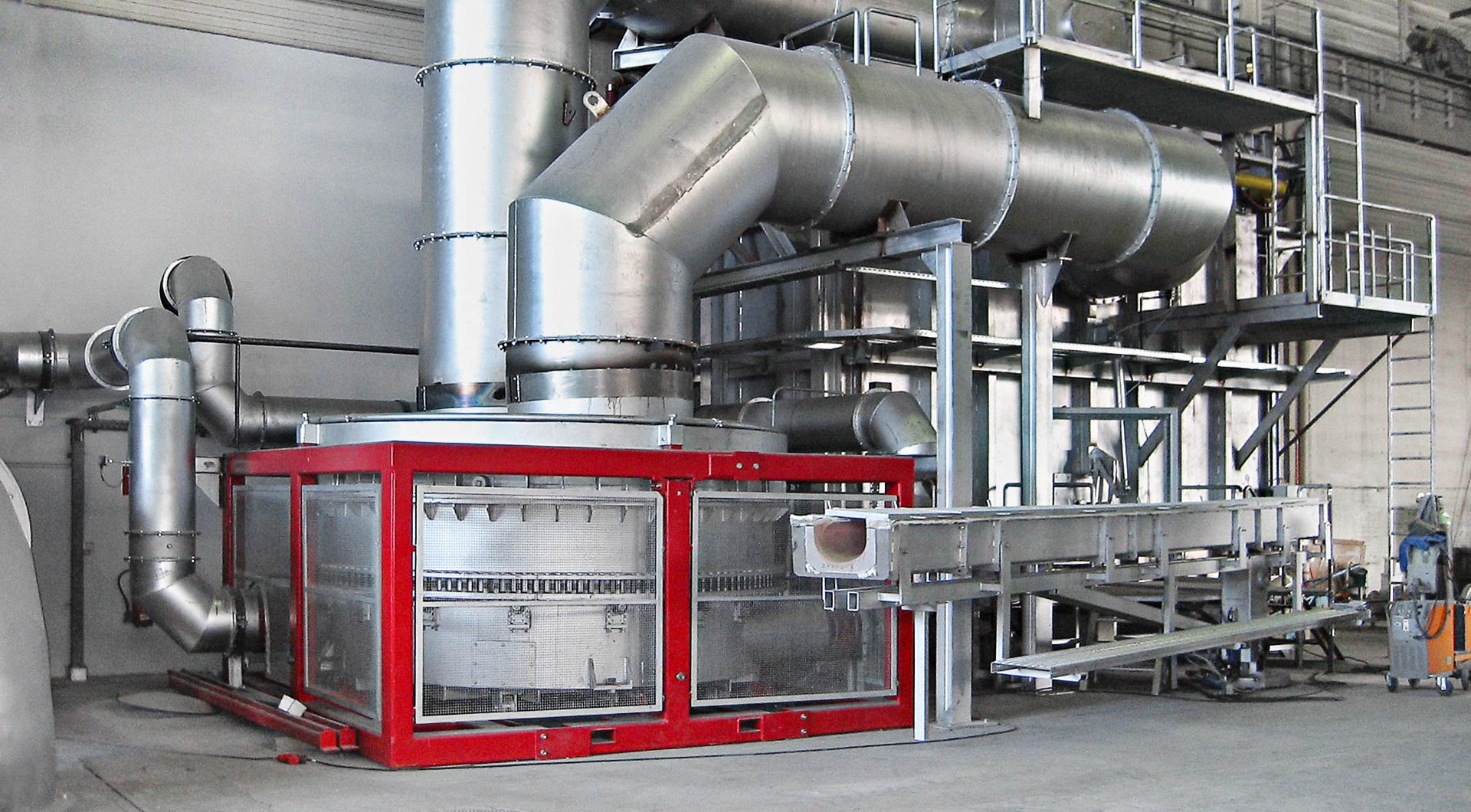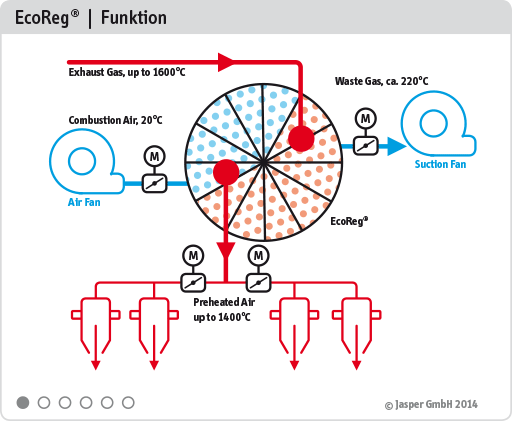EcoReg®
Rotary bed regenerator DR

The specialist for gas, oil and coal
EcoReg® is designed especially for high-capacity and high-productivity gas, oil and coal dust furnace systems. The rotating regenerator enables continuous air preheating and use of any desired number of burners. This optimised product therefore replaces classic recuperator designs and cycle-action regenerators.
Advantages:
- An extremely high level of efficiency
- Enhanced productivity
- Process optimisation
- CO2 savings of up to 62%
- Stationary conditions during active operation
Individual configuration
Burner characteristics (e.g. radiant and intermittent burners) can be freely selected. Their power control can also be individually adapted. A control range of 10:1 can be achieved without difficulty in this respect. The flue gas inlet temperature control normally required on regenerators is dispensed with.
Reduced consumption
The integrated heat exchanger principle (function) ensures major fuel /CO2 savings. Consequently, the maximum mean combustion air temperature is approx. 1,060 °C (low temperature version) or approx. 1,250 °C (high temperature design). Flue gases from the regenerator (which contains a heat exchanger) are only at temperatures between 140 °C and 310 °C. This enables a reduction in fuel /CO2 consumption of up to 62 %.
EcoReg® / Function

Three-part system
EcoReg® consists of a three-part regenerator with a fixed substructure and superstructure. It also has upper and lower connections for combustion air and flue gas – each designated for hot and cold tasks.
Central heat exchanger
The heat exchanger is located centrally in the installation. This involves a rotating container divided into chambers with a refractory lining and seal. These chambers contain the heat storage padding which draws its energy from the hot furnace waste gas. The highlight here is that the heat stored in this manner is conveyed to the opposite combustion air side through the rotation of the central component. Heat exchange then takes place. The cold combustion air is heated in this manner, whereas the padding cools down again. The hot combustion air is mixed with fuel and enters the burner where it is ignited, thus heating the furnace. The cooled chamber rotates further towards the waste gas side where it stores fresh energy. This continuous transportation of energy is controlled by a thermal element in the cold waste gas, whereby the velocity of the regenerator governs its waste gas temperature.

Product sheet EcoReg®
Download (PDF)